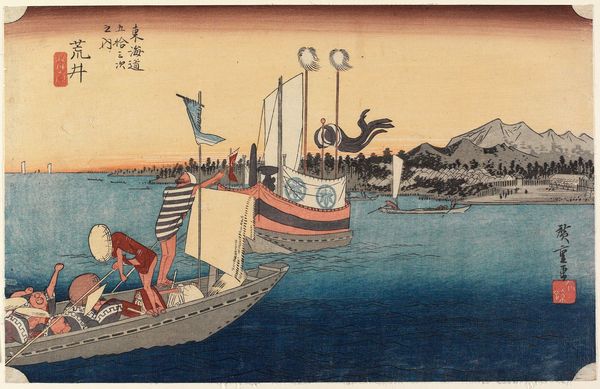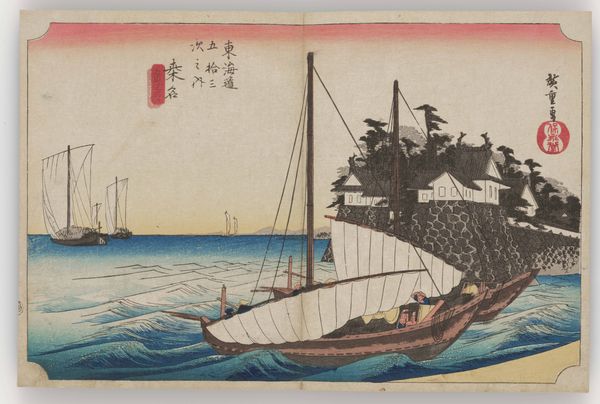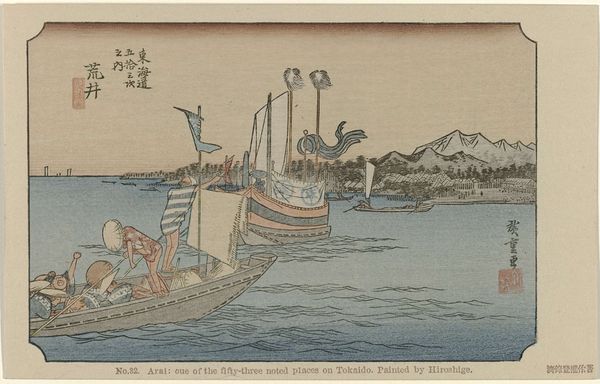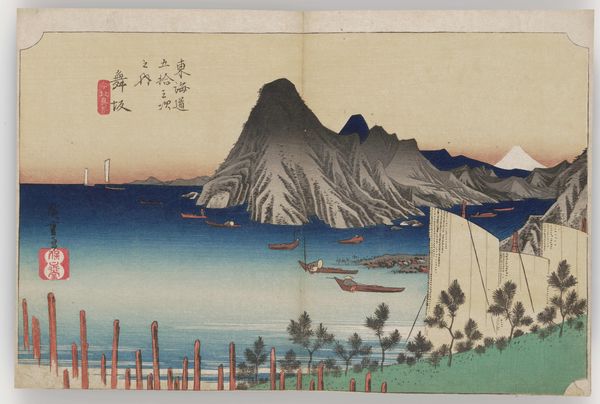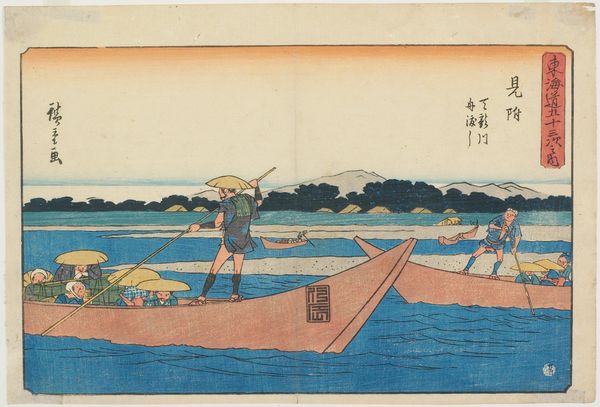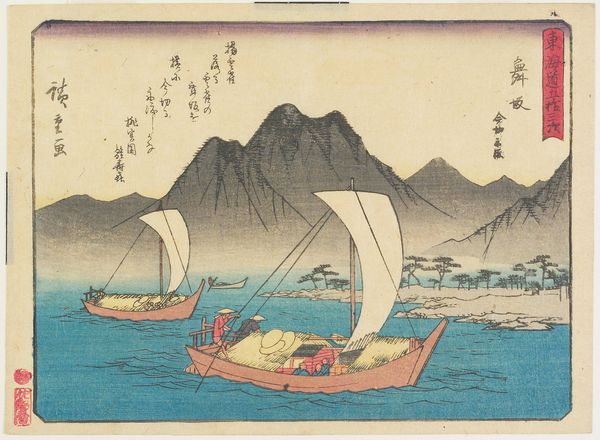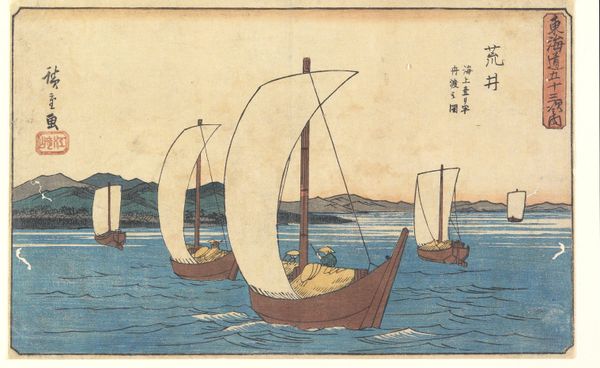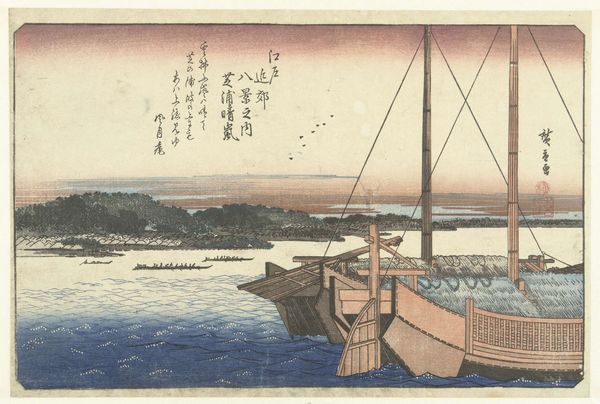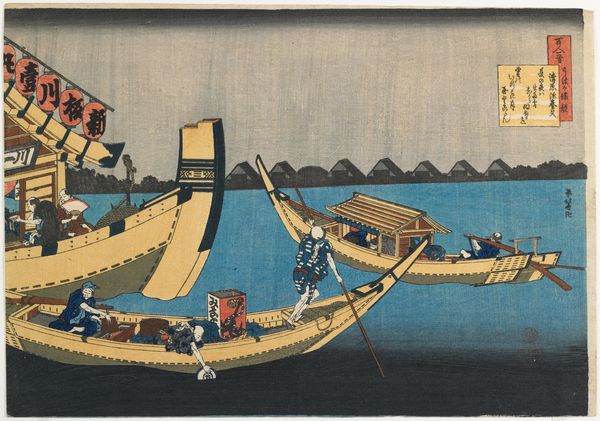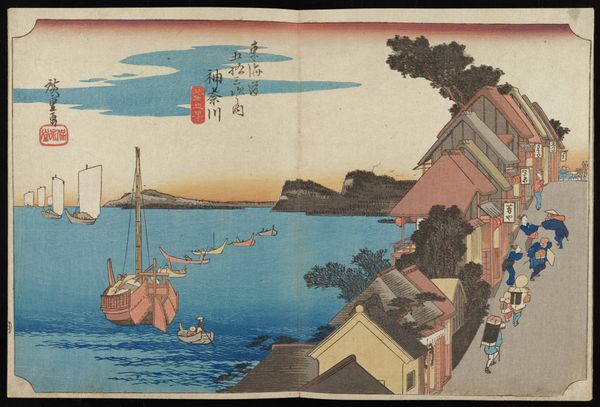
print, paper, ink
# print
#
landscape
#
ukiyo-e
#
japan
#
paper
#
ink
Dimensions: 9 1/2 × 14 1/4 in. (24.13 × 36.2 cm) (sheet, horizontal ōban)
Copyright: Public Domain
Editor: So, this is Utagawa Hiroshige's "Arai--Scene with Ferry Boats," a color woodblock print made around 1832-1833. It's a fairly calm scene of boats in the water, but the foreground boat is very crowded. What stands out to you most when you look at it? Curator: Well, viewing this through a historical lens, I'm immediately drawn to its role in shaping perceptions of Japan. Hiroshige's prints, like this one, were hugely influential in the West. Consider how this image contributes to a specific narrative, perhaps of an "exotic" or peaceful Japan. Is that the full story though, or does it conceal underlying social complexities or the realities of travel in the Edo period? Editor: That's interesting. I hadn't really thought about it like that. What do you mean about realities of travel in the Edo period? Curator: Travel during that time was tightly controlled, but increasingly common. How do you think this print participates in both promoting and potentially masking that reality? Consider the perspective it offers—almost a tourist's view, wouldn't you agree? Also, how might this print function within the larger context of the Ukiyo-e movement? Editor: I see your point. It feels like it romanticizes travel, even if life for people back then may have been a daily grind. Do you think that kind of idealization had real political or social effects back in its day? Curator: Absolutely! Think about the consumers of these prints. Were they primarily Japanese, or were they destined for export early on? If primarily domestic, how did they shape the average person's view of their own country and its regions? These images could serve to solidify national identity or perhaps, create a sense of longing or desire. What’s your impression? Editor: This makes me look at it in a completely different way, from seeing just pretty boats on water, I can appreciate the historical influence this print had on cultural perceptions of Japan, and still might have. Curator: Precisely! It highlights how art can shape and reflect social and political narratives, extending its impact far beyond simple aesthetics. I learned a lot thinking of it this way as well.
Comments
No comments
Be the first to comment and join the conversation on the ultimate creative platform.
